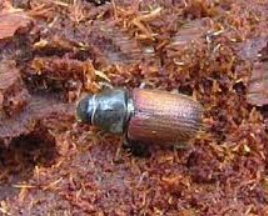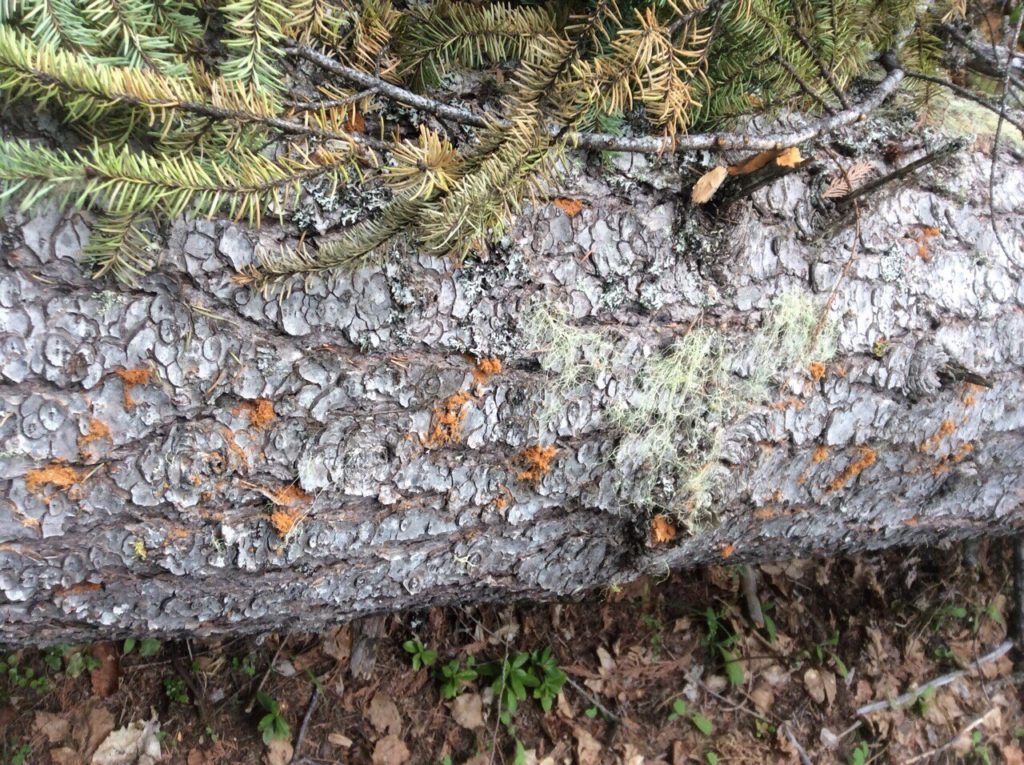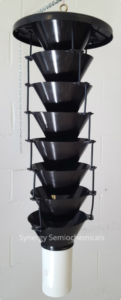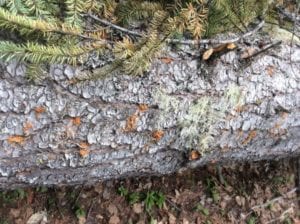Douglas-fir beetle (Dendroctonus pseudotsugae), is a close relative of the spruce beetle and mountain pine beetle. The small (4.5-7mm) bark beetle is a destructive insect associated with our mature Douglas-fir forests and can, during occasional catastrophic outbreaks also infest Western Larch trees. BC Aerial overview surveys recorded 47,628 hectares of damage in 2015.


Beetles emerge from the insulating bark as soon as temperatures warm up in the spring. They can detect trees in distress, such as during hot summers or trees weakened by other agents such as root rot and need to attack in large numbers to overcome the tree’s defenses or they will get trapped in sap and killed by the tree. Communication between beetles occurs through the release of hormones called ‘pheromones’. Pheromones signal other beetles where a suitable host is invaded and also when it is fully occupied to direct them towards other opportunities. This knowledge can be harnessed for the use of synthetic lures and traps. The beetles bore through the bark into the moist phloem where they establish their egg galleries. Their entrance holes can be detected by little piles of frass (sawdust) on the bark. This occurs between May to early June In our area. The tree’s nutrient supply network is interrupted when the galleries are established. When this affects the entire circumference of the tree it will slowly die. The eggs need a moist inner bark to develop into larvae and finally pupae during fall and winter, In the spring beetles are ready to fly again. Sometimes two flights occur during summer.![]()

Beetles are attracted to fresh blowdown and freshly logged slash or green firewood cuttings.The insect may travel and spread to other places while hidden in firewood such as to the fir trees on someone’s private property or along highways during transport.
We have detected a hot-spot of Douglas-fir bark beetle on the Wardner trail above Kaslo. The presence of this bark beetle is a concern but not entirely unexpected, since the southerly exposed, dry hillside has centers of root rot stressed Douglas-firs in advanced decline, which send out distress signals that can be detected by the beetle. The forest composition in this area consists of an almost exclusive Douglas-fir type. Keeping the population below catastrophic levels will be a priority to minimize forest mortality and thus heightened wildfire risk in close proximity to the Kaslo interface. We will address the infestation during the planned CP43 wildfire fuel break establishment on the ridge just above this area in 2020.

